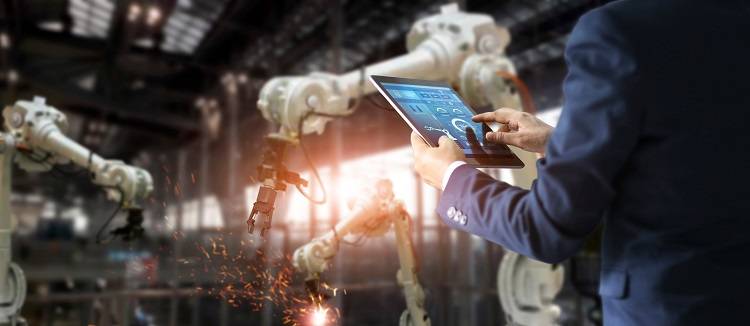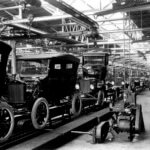In this, the first part of a two-part series, we look at the role of artificial intelligence in the industrial arena. The topic of artificial intelligence (AI) has hit the headlines recently, as the latest generation of cloud-based AI tools promises to offer a major leap forward in the power of machines. In all the discussions about how AI will affect us, very few have talked about the hardware that these machines will require. However powerful these machines become, they will still need physical infrastructure to provide power and communications. The need to connect artificial intelligence with hardware will grow hugely.

One of the most interesting uses for AI will be in the factory, where it has the potential to transform the industrial environment. The growth of the Internet of Things (IoT) for industrial applications has brought together every element of the manufacturing process together in order that it functions as a single entity, often known as the smart factory. To illustrate how the Industrial IoT (IIoT) works, it is important to understand the structure within the smart factory and how it affects the production process.
The Shape of the Smart Factory
In the traditional factory, all elements of the manufacturing process were separate, from the receipt of raw materials, through production and finally to the despatch of completed goods. Each machine within the production line was separate from all others, and the process was managed at a high level. The factory was organized in such a way to be very efficient at one task, but not flexible enough to be able to accommodate changes easily.
The smart factory provides the flexibility that traditional factories cannot. The IIoT allows each machine to collect data about its own function and status, which is then shared with the entire network. Not only does this sharing of information allow the efficient running of the factory, but it also allows any potential problems to be identified so that action can be taken to minimize disruption.
The topology or structure of the smart factory is an important factor in its success. The topology is described as a series of layers. At the top is the enterprise layer. Contained within this layer are all the systems that administer and control the business, from sales and marketing to logistics and maintenance. It is at this level that the overall running of the organization is conducted.
Below the enterprise layer is the control layer. This contains the systems that receive the demands from the enterprise layer and converts them into a work schedule, ensuring that the raw materials are in the right place and that the operators are ready.
At the lowest level is the device layer. This is the factory floor where all of the machines are operated. In a traditional factory before the era of the IIoT, these machines would all have been controlled locally. Skilled operators would ensure that the processes ran smoothly, with little interaction with the rest of the operation.
With the advent of the IIoT, all machines at the device layer are connected, sharing data both with each other and the upper layers of the business. Therefore, information has become a critical raw material within the smart factory, and it is shared between all layers of the factory.
Industrial Automation and the IIoT
Industrial automation forms an integral role in the modern production line. From simple motors to complex robots, many manufacturing processes take advantage of the latest technology to reduce the need for human input. This automation equipment has become even more important in the new smart factory.
In contrast to traditional factories, the latest generation of industrial automation equipment plays an active and important role in how IIoT has changed the manufacturing environment. As the IIoT depends on the feedback from all elements at the device level, there is a need for industrial automation equipment to be equipped with sensors that monitor their performance. This information is shared with the control level to understand how the machine is functioning.
This has brought with it several benefits for the user. The first is that the performance of the entire production line can be monitored. If one machine is running more slowly than others, the production line can be reconfigured to allow for the change. In fact, two-way communication with automation equipment has a significant effect on the flexibility of manufacturing by allowing the user to respond quickly to changes in demand.
Monitoring the performance of individual machines also brings with it advantages when the time comes to carry out maintenance of the production line. With a wide range of parameters being recorded from temperature to energy consumption, the data collected provides early warning of any upcoming maintenance requirements. For example, an increase in vibration within a motor might suggest that a bearing needs to be changed, or a rise in the energy needed for a molding machine could indicate a failing heating element.
It is this sharing of information within the smart factory that makes it so important to manufacturers. The smart factory will feature improved flexibility and the ability to respond rapidly to changes in demand. Analyzing performance data allows increased emphasis on preventative maintenance to reduce downtime. This data is also going to be consumed by AI technology to make the factory environment truly autonomous.

In the second part of this series, we will investigate the industrial environment. We will examine how customers can connect artificial intelligence under these tough conditions, and look at how Samtec develops technology such as the COM-HPC for the demanding high-speed applications in the factory of the future.



Leave a Reply